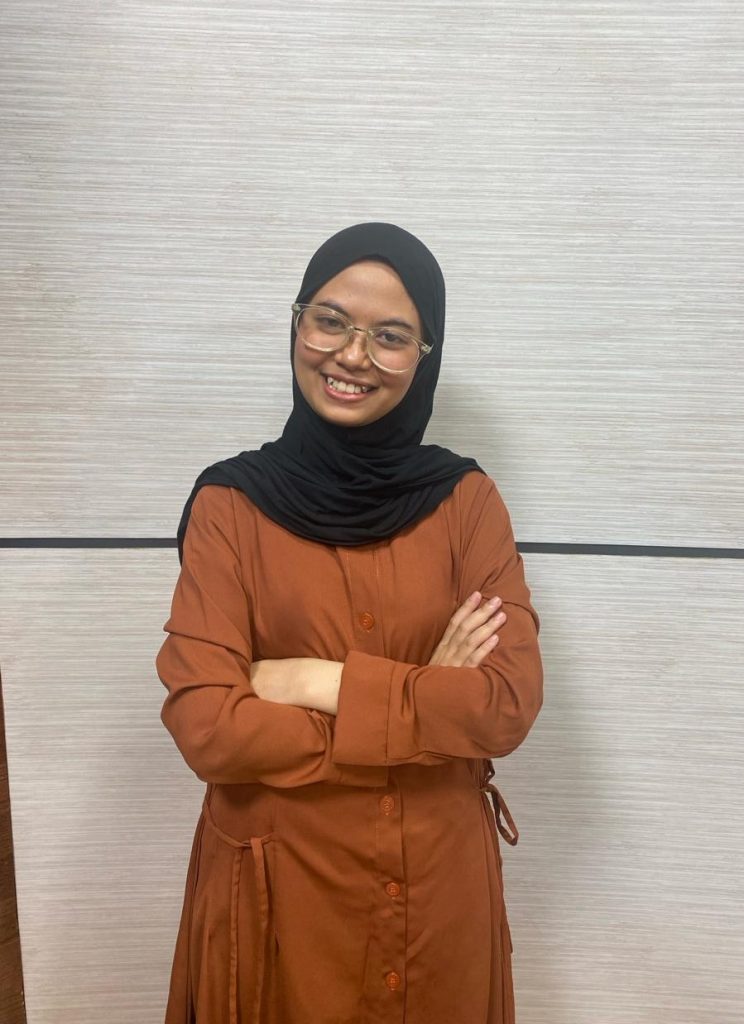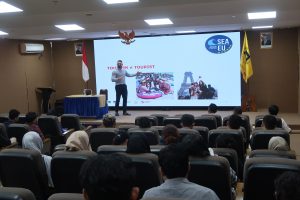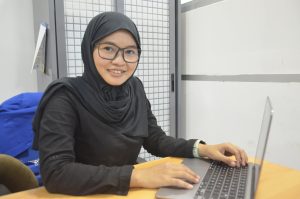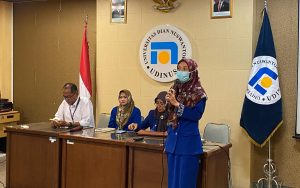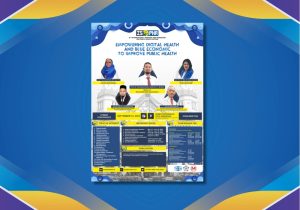Annis Luthfiya – A Biomedical Engineering Student at Udinus
In this era of advancement, every technology has essentially become a part of all aspects of human life, including the medical aspect. The medical field also utilizes technology to improve efficiency, allowing this field to improve even further. This particular phenomenon pushed Annisa Lutfiyah Handayan (22), a Biomedical Engineering Student at Universitas Dian Nuswantoro (Udinus), to pursue the field of Biomedical Engineering and managed to invent a prosthetic leg.
Annisa’s interest in medical technology has emerged ever since she was in middle school. By the time she was in high school, she continued to pursue her passion by majoring in natural science. At that time, she was only familiar with the concept of medical science. As time passed, however, her mindset became more expansive, allowing her to see the medical field with also a wider viewpoint.
“During the pandemic times, I became more aware that the medical sector depended on technology,” Annisa, a student of the 2020 cohort, explained.
Committed to pursuing the Biomedical Engineering field, Annissa, born in 2002 in Demak, searched for a place for her to study at. Ultimately, she decided to choose Udinus as the perfect choice.
“When I looked for a college institution with a Biomedical Engineering program, it turned out that Udinus had one. Coincidentally, this campus is also considered strategic. In addition, the Engineering Faculty on this campus also implements the capstone design,” she continued.
Introduced to the Capstone Design
Annisa also uttered that the Engineering Faculty also allowed its students to work on projects as final assignments instead of papers. The projects were primarily made by implementing theories students had learned in previous semesters.
According to Annisa, this particular system was remarkable for students with an interest in practical things. Through this system, Annisa and her classmates became more enthusiastic and passionate in pursuing their studies.
“It is fun to implement this system. Moreover, I am the type of person interested in practical. For this reason, I became more passionate in completing my studies,” she revealed.
Furthermore, through the implementation of the capstone design, students can finish their final assignments in groups as long the project can contribute to resolving problems surrounding the general public.
On that occasion, Annisa and her team worked on a prosthetic leg to help people with disabilities. The development process of this leg lasted for about three months by undergoing several processes. It began with the acquisition stage by sampling a 3D data from the user. This process was conducted to acquire the 3D modeling for the design as well as an idea of what kind of print is used in the making process.
“We also tested the flexibility, power, and material durability of our newly invented prosthetic leg. In addition, we also conducted a simulation process for the users to test several prosthetic leg versions we had made. The simulation process spanned two weeks with us monitoring,” she uttered.
During the making process, she claimed that they received support from the Biomedical Engineering department as well as the campus in the form of facilities and guidance.
“Hopefully, our newly invented prosthetic legs can also reach other people with disabilities for them to use,” she concluded. (Humas Udinus/Ika. Foto: Humas Udinus)



